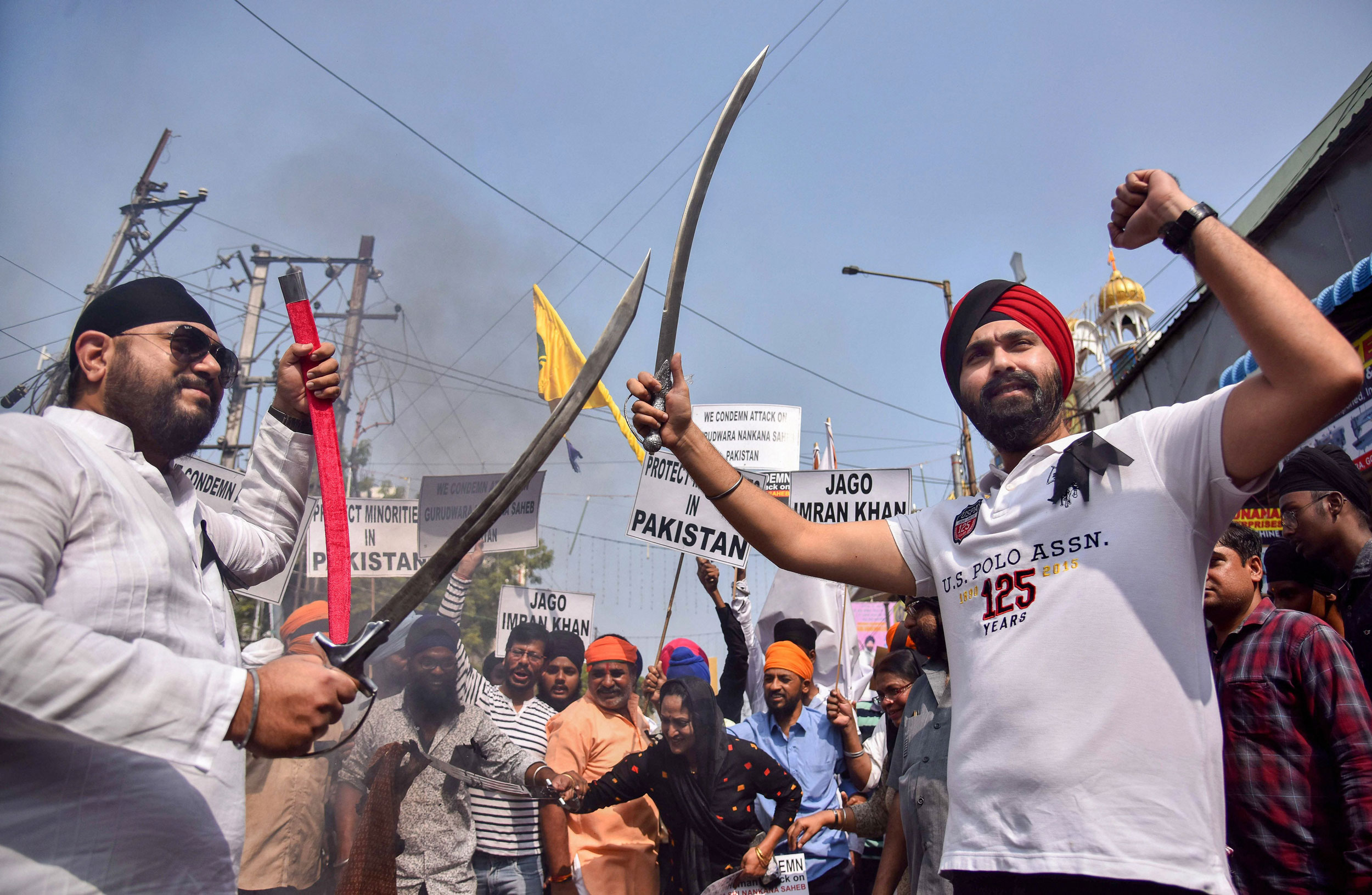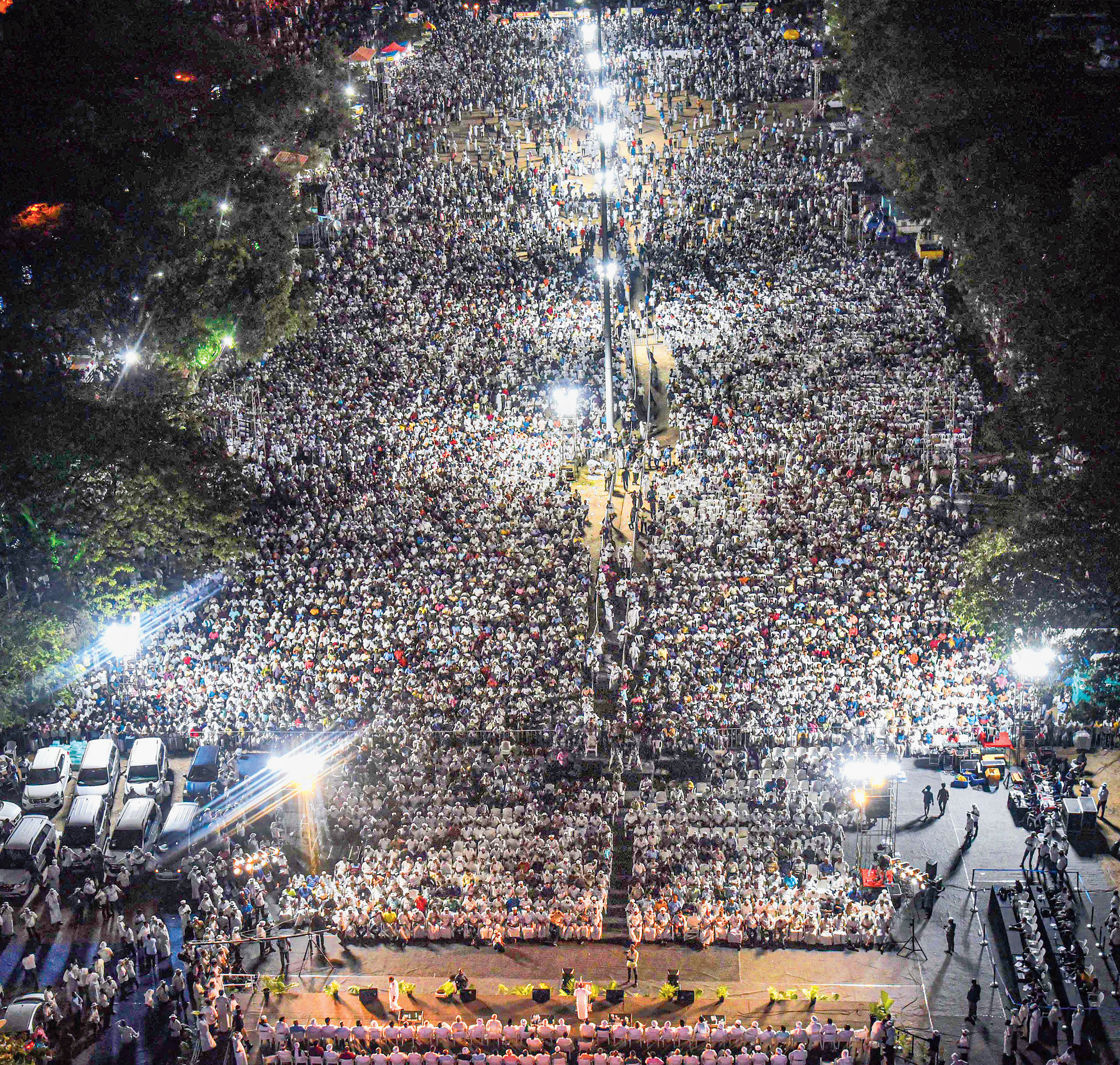On the day an ugly mob in Pakistan staged a demonstration outside the premises of the Nankana Sahib gurdwara and threatened to turn it into a Muslim shrine, there were concerns expressed by liberals on social media and elsewhere that the supporters of the Bharatiya Janata Party would try and use the incident to mobilize support for the Citizenship (Amendment) Act.
Their concern was legitimate. Ever since the present movement against the CAA began on December 13 in Calcutta and spread throughout the country, the protesters have emphasized the allegedly discriminatory provisions of the legislation and wilfully underplayed its central concern — providing succour to the lakhs of refugees from Afghanistan, Pakistan and Bangladesh who came to India to escape sustained religious persecution. The Nankana Sahib incident reminded people that the persecution of religious minorities was real and ongoing.
The Pakistan government was, no doubt, embarrassed by the show of hate against the minuscule Sikh population that has somehow managed to stay on in Pakistan. The cleric who was videographed spewing anti-Sikh rhetoric was hurriedly made to recant, in line with Islamabad’s present policy of showing empathy with Sikhs, particularly those who supported the movement for Khalistan. However, as the incident showed, there is a big distance between official government policy and the impulses of civil society. The Christian minority in Pakistan has encountered this repeatedly — with blasphemy charges being hurled against them for the flimsiest of reasons — and Hindus have lived in unending fear of women being abducted and forcibly converted to Islam. Now it was the turn of the Sikhs, otherwise a forgotten minority in Pakistan.
The incident in Nankana Sahib is purely illustrative. The CAA stipulates that those minorities from the three neighbouring countries who came to India to escape religious persecution until December 31, 2014, will be eligible for fast-track naturalization. This naturally means that, hypothetically speaking, any Sikh, or for that matter, Christian who entered India after that date will have to wait 11 years before being considered for citizenship. Any remaining Sikh in Pakistan who now believes living in that country has become intolerable can of course come to India and seek refuge. Since crossing the border illegally is difficult, most Hindu and Sikh refugees arrive on short-term pilgrimage visas and then apply to stay on. In most cases, the request is accepted by the authorities but the refugees lead a precarious life as stateless people. Till a few years ago, they were even denied the right to open bank accounts since they lacked proper documentation. The joint parliamentary committee on the citizenship (amendment) bill met some of these refugee communities leading a precarious existence on the outskirts of Jodhpur. Almost all the members of parliament were convinced that these people deserved the normal rights of citizens.

Protesters hold placards and raise slogans during a demonstration against the Citizenship Amendment Act and NRC in Calcutta on Sunday. (PTI)
A broadly similar situation prevails for refugees arriving in India from Bangladesh. There is absolutely no doubt in my mind that the Awami League government of Sheikh Hasina is anxious to make Hindu Bangladeshis feel a part of the Bengali nation. Apart from the legacy of the Liberation War of 1971, there are practical concerns: the Hindu Bangladeshis form a significant vote bank for the ruling party.
Yet, here too, ground realities can be awkward. While the Hindu minority can exist with a measure of security in a city such as Dhaka, it is particularly vulnerable in the small towns and rural areas. For these Hindus, the alternative to harassment is the journey to India by means both legal and illegal. According to Abul Barkat, a professor of economics at Dhaka University, around 113 lakh Hindus left East Pakistan/Bangladesh for India between 1964 and 2013 “due to religious persecution and discrimination”. According to his study, “Before the Liberation War, the daily rate of migration was 705, while it was 512 during 1971-1981 and 438 during 1981-1991. The numbers increased to 767 persons each day during 1991-2001, while around 774 persons left the country [each day] during 2001-2012…” Barkat has expressed his fear that by 2050 there will be no Hindus left in Bangladesh (Dhaka Tribune, November 20, 2016).
Regardless of whether the ethnic cleansing turns out to be real or partial, there is no doubt that Hindu refugees from Bangladesh will be the principal beneficiaries of the CAA. Yet, curiously, the huge furore over the legislation that has moved a very large section of India’s Muslim community to take to the streets in protest, has barely touched this issue. The media, which have otherwise focused on the protests by both Muslims, liberals from other communities and India’s Opposition parties, have left this issue largely unattended. The recorded history of the Partition of India has largely focused on the terrible human sufferings of those who crossed the Radcliffe Line in North India. There is even a museum in Amritsar documenting the painful memories of people whose lives were turned upside down with Independence.
Tragically, the trauma of Partition in eastern India has remained relatively under-documented and under-publicized. There are three reasons for this.
First, unlike north India where the creation of West Pakistan led to an instant displacement of Hindu and Sikh communities, the unsettling of the east was more long-drawn and gradual. For long, India’s leaders nurtured the belief that while Partition in north India was permanent, East Pakistan would go its own way and that the displaced people would trickle back to their homes. This was the basis of the Nehru-Liaquat Pact of 1950 which determined why Hindu refugees from East Pakistan were given relief but never quite incorporated in the schemes of refugee rehabilitation. Consequently, the refugee problem in the east was cloaked in denial. The Hindus who fled East Pakistan/ Bangladesh over the decades were consciously deprived of victimhood. They were largely left to muddle through life.
Secondly, thanks to the intellectual overweight of Left ideology in the Bengali intelligentsia, invocation of the Hindu experiences across the border was regarded as unworthy. The refugee community was encouraged by the communist parties to fight for better living conditions in the makeshift colonies and the squalid refugee camps. However, any meaningful deliberation on why they were there as refugees was actively discouraged. There was a rupture between patterns of political mobilization before and after Independence in West Bengal. It was broken for the first time in the general election of 2019.
Finally, while Hindus streamed into India from across the border after 1947, there was also a significant Muslim migration into Assam and West Bengal. Initially the influx may have been driven by economic compulsions. However, along the way, politicians began to view the importance of Muslim migrants from Bangladesh as reliable vote banks to offset the clout of settled communities. As shifts in demography became pronounced in the border districts of Assam and West Bengal, the original refugee problem was overwhelmed by a parallel move to legitimize — either officially or unofficially — all illegal migration and detach it from the Partition syndrome. This has led to the dilution of the earlier belief that refugees must be able to seamlessly merge into the larger civic community. Simultaneously, the meaning of secularism has been stretched to imply that Muslim Rohingya refugees from Myanmar must be accommodated in West Bengal.
These issues are at the heart of the CAA. What is bewildering, however, is that the discourse has moved in a different direction. The focus is no longer on refugees but on the loss of Muslim political clout after the Bharatiya Janata Party victory of 2014. To this has been added the lament of liberals over their marginalization from decision-making structures. Both are irrelevant to the CAA.



